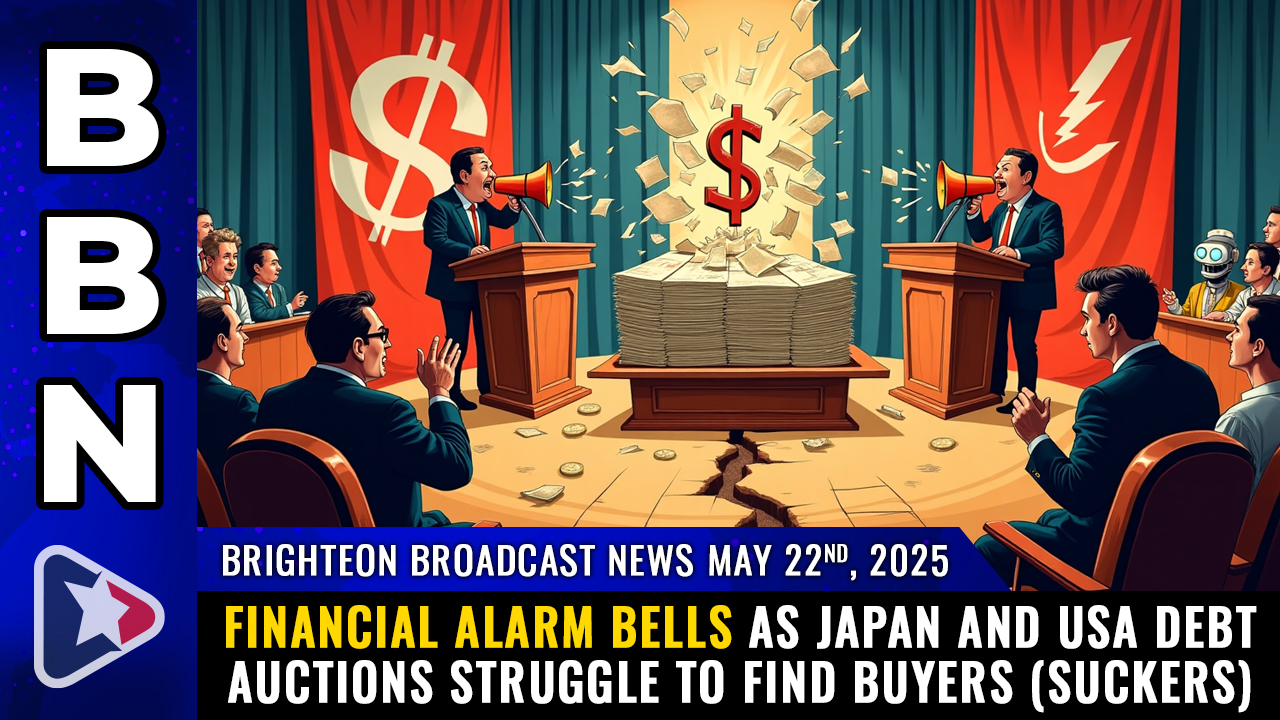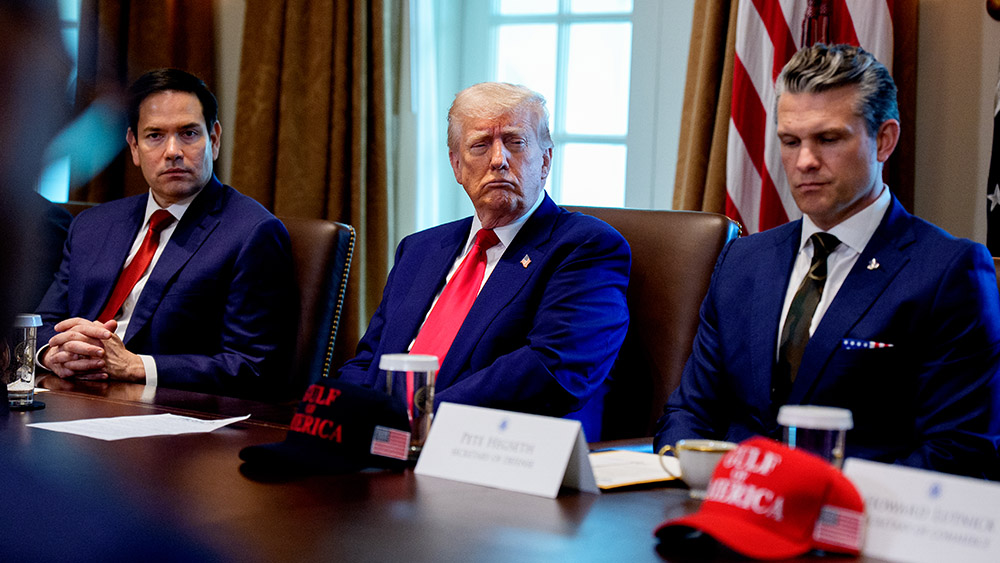 Parler
Parler Gab
Gab
- Japan’s 30-year bond yields hit a record 3.15%, while U.S. 20-year Treasury yields surged to 5.1%, signaling collapsing confidence in government debt sustainability and potential global market contagion.
- Analysts like Christopher Green compare the bond market collapse to a financial "nuclear bomb," threatening not just the U.S. but the entire Western financial system, echoing 2008’s meltdown risks.
- Rising Japanese bond yields could trigger a violent unwinding of the yen carry trade, where cheap yen-funded global investments may collapse, destabilizing markets worldwide.
- Moody’s downgraded major U.S. banks and sovereign debt, while experts like Mike Adams warn of an impending dollar collapse, urging investments in gold, silver, and crypto.
- Governments face a no-win scenario—either allow debt markets to implode or print more money, accelerating inflation and currency devaluation, with global economic upheaval inevitable.
Financial Markets Sound Alarm as Sovereign Debt Crisis Looms
Financial markets are flashing warning signs as Japan and the United States struggle to attract buyers for their long-term debt auctions. The yield on Japan’s 30-year government bonds surged to a historic high of 3.15%, while U.S. 20-year Treasury yields spiked to 5.1%—a dramatic move signaling waning confidence in sovereign debt. Analysts warn this could trigger a cascading collapse in global bond markets, reminiscent of past crises like Greece’s sovereign debt meltdown. Christopher Green, a financial analyst and Bitcoin advocate, described the situation as a "nuclear bomb" about to detonate in the financial system. "We are entering what I believe will be the equivalent of a nuclear bomb going off in the U.S. financial system soon," Green warned. "This will affect not just the fixed income infrastructure here in the States but also hit the Westernized world at large."The Domino Effect of Rising Yields
The spike in bond yields indicates that investors are demanding higher returns to compensate for perceived risks, a clear sign of eroding confidence in government debt sustainability. The U.S. Treasury’s recent 20-year bond auction saw yields jump from 4.9% to over 5.1% in a single day—an alarming shift that sent shockwaves through equity markets, causing stocks to tumble. Japan’s situation is equally dire. The Bank of Japan has long relied on ultra-loose monetary policies, including negative interest rates, to sustain its economy. But with its 30-year bond yields hitting record highs, the country’s debt burden—already the highest in the world relative to GDP—is becoming increasingly untenable. Green compared the unfolding crisis to the 2008 financial meltdown, warning that central banks may soon be forced to intervene as debt markets unravel.The Hidden Risks of the Japanese Yen Carry Trade
One critical factor exacerbating the instability is the Japanese yen carry trade, where investors borrow cheap yen to invest in higher-yielding assets abroad. If Japan’s bond yields continue rising, this trade could unwind violently, destabilizing global markets. "Wall Street has been borrowing cheap yen for decades to fuel speculative investments," Green explained. "If that carry trade collapses, it will send shockwaves through every major financial market."Moody’s Downgrade Adds Fuel to the Fire
Adding to the turmoil, Moody’s recently downgraded the credit ratings of several major U.S. banks, including Bank of America, JPMorgan Chase, and Wells Fargo, citing deteriorating deposit safety and liquidity risks. This follows the agency’s earlier downgrade of U.S. sovereign debt, a stark admission that the dollar’s dominance is under threat.The Inevitable Collapse of the Dollar?
Mike Adams, founder of Brighteon Broadcast News, has long predicted a dollar collapse, arguing that the U.S. government’s reckless money printing and debt accumulation are unsustainable. "The way this ends is with a total collapse of the dollar currency and almost certainly a collapse of the U.S. Empire as we know it," Adams stated. He advises investors to shift into tangible assets like gold, silver, and cryptocurrencies to hedge against the coming financial storm.What Comes Next?
With central banks trapped between rising debt costs and the need to print more money to sustain spending, the stage is set for a historic financial reckoning. As Adams warns, "The collapse of the dollar has an upside and a downside—but it’s coming either way." For now, the bond market’s message is clear: the era of cheap government debt is over, and the fallout could reshape the global economy in ways few are prepared for. Watch the May 22 episode of "Brighteon Broadcast News" as Mike Adams, the Health Ranger, talks about financial alarm bells as Japan and USA debt auctions struggle to find buyers. This video is from the Health Ranger Report channel on Brighteon.com.More related stories:
Trump’s surprise role in Japan trade talks signals new economic order US asset exodus accelerates as dollar declines amid historic debt crisis and federal recklessness The looming debt crisis: Is America following the path of collapsed empires? Sources include: Brighteon.comIn the shadow of dissent: DIA insider’s leak plot exposes deepening security challenges
By Willow Tohi // Share
Trump threatens to cut federal funding to California over transgender athlete controversy
By Laura Harris // Share
Trump orders federal hiring overhaul, replacing DEI with merit-based system
By Willow Tohi // Share
Trade truce in danger as Trump accuses China of violating deal, talks hit roadblock
By Cassie B. // Share
Trump administration approves waivers to ban junk food from SNAP
By Laura Harris // Share
Governments continue to obscure COVID-19 vaccine data amid rising concerns over excess deaths
By patricklewis // Share
Tech giant Microsoft backs EXTINCTION with its support of carbon capture programs
By ramontomeydw // Share
Germany to resume arms exports to Israel despite repeated ceasefire violations
By isabelle // Share










